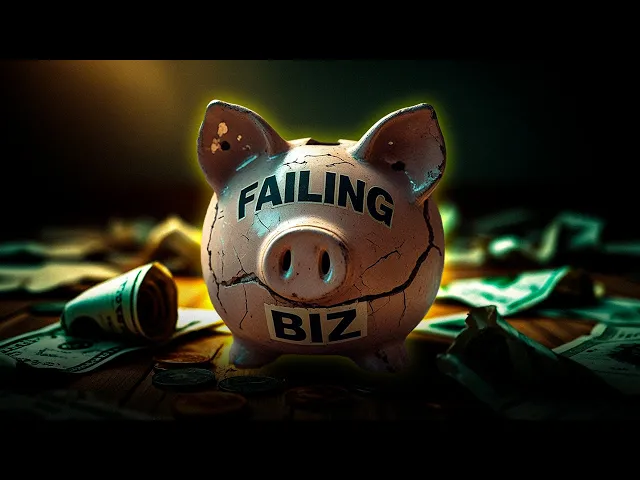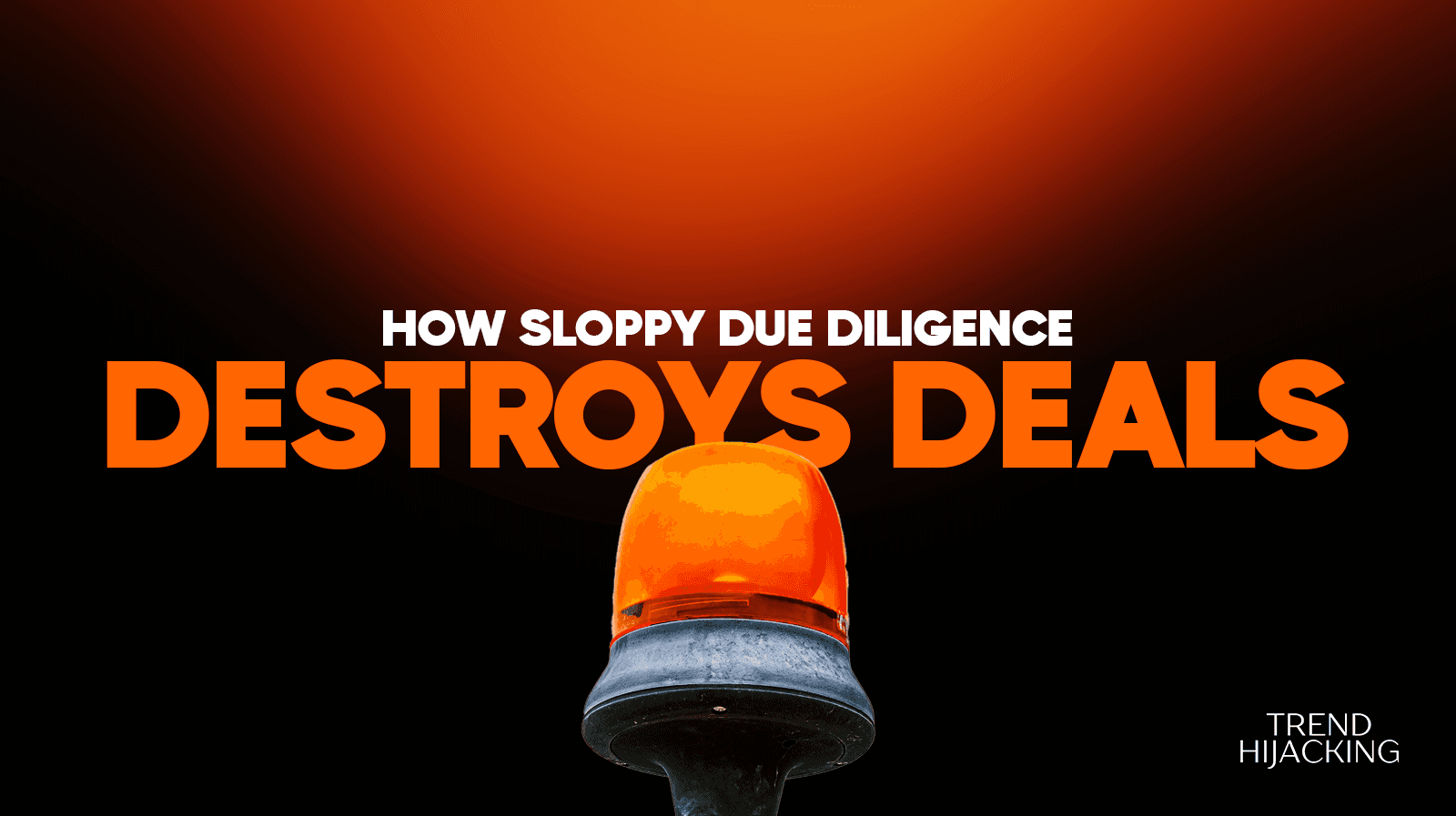
How to Spot a Failing Business You Can Turn Around for Profit
Why Buying Struggling Businesses is a Hidden Goldmine

BEFORE we dive into the strategy, let’s quickly discuss why acquiring failing businesses can be one of the smartest entrepreneurial moves you’ll ever make.
1. Lower Buy-In Cost: When a business is struggling, owners are often desperate to sell.
This means you can acquire such businesses at 50-70% below market value, leaving you with more capital to invest in growth.
2. Less Competition: Most buyers chase "perfect" businesses with stable revenue and strong profit margins.
However, real entrepreneurs create value—they don’t just buy it. By targeting struggling businesses, you avoid bidding wars and can negotiate better deals.
3. High Upside Potential: A business that appears to be failing is often just mismanaged or under-optimized.
With the right strategies—better marketing, streamlined operations, or automation—you can rapidly increase its profitability.
Still not convinced? Here are some real-world examples to note:
Howard Schultz didn’t start Starbucks—he bought it and transformed it from a small coffee chain into a global empire.
Sam Zell built his fortune by acquiring distressed real estate and turning it into high-value assets.
Overall, the lesson here is that acquisition entrepreneurs don’t start from scratch—they buy, fix, and scale.
We Help You Buy / Build, Manage and Scale E-commerce Brands for an EXIT
E-commerce Simplified for Busy Individuals – We handle the buying, building, and scaling, so you can focus on what matters.
Growth-Focused Strategies – From sourcing to marketing, we drive growth and prepare you for a profitable exit.
Expertly Managed Exits – We build a high-value brand designed for a Lucrative exit.
How to Spot an Underperforming Business with High Potential

Not every struggling business is a good buy.
The secret is to identify businesses with fixable problems—not ones with broken business models.
So, how exactly do you spot such businesses?
Here are Key Signs to look for to help you spot a turnaround opportunity:
Declining Revenue but a Strong Customer Base: If sales are dropping but the business has a loyal audience, this usually indicates a marketing or operational issue—both of which can be fixed.
Great Product, Bad Branding: Some e-commerce stores have amazing products but horrible branding. A simple website redesign, better ad creatives, and a stronger brand identity can dramatically increase revenue.
Over-Reliance on a Single Traffic Source: If a business depends 90% on Facebook ads, it’s risky—but also a huge opportunity. By diversifying into TikTok, SEO, or email marketing, you can stabilize and scale its revenue streams.
Owner Burnout & Poor Systems: Many business owners lose motivation and stop optimizing their stores.
Automating fulfillment, hiring virtual assistants, and fixing logistics can instantly improve profitability.
Here’s a perfect example of an opportunity to consider:
Imagine a Shopify store generating $300K/year but with declining sales.
Instead of paying a $450K valuation (3X earnings), you negotiate a $250K deal due to "declining revenue."
After fixing the ads and email marketing strategy, you turn the business into a profitable asset.
Smart buyers see these issues as opportunities, not deal-breakers.
Related: Top Post-Election Opportunities To Grab Before 2025 Hits
Conducting Due Diligence – Avoid a Bad Investment

Not every struggling business is worth saving. Some have fundamental flaws that make them a bad investment.
Your ultimate weapon here is conducting in-depth due diligence that helps you spot bad investments.
Follow this 4-step due diligence process to shield yourself from a bad investment:
Step 1. Financial Audit: Check revenue trends, profit margins, and expenses. If costs are too high due to unfixable supplier contracts, walk away.
Step 2. Customer Base & Retention: Are customers happy? A high churn rate signals deeper problems, such as poor product quality or bad customer service.
Step 3. Supplier & Logistics Review: Unreliable suppliers can kill an e-commerce business. If fulfillment takes 30+ days, “fixing it” could be too costly.
Step 4. Ad Account Review: Check Google and Facebook ad accounts. If the business is banned from running ads, it’s a major red flag.
Here’s an example of a good buy vs. a bad buy:
Bad Buy: A brand selling $1M/year but with 5% profit margins due to very bad supplier contracts.
Great Buy: A store making $400K/year with 21% profit margins but declining sales due to ad mismanagement. Fixing the ads could quickly boost profitability.
Want to avoid a bad buy? The secret is to buy businesses with fixable problems—not unsalvageable ones.
Negotiating the Best Price

Once you’ve found the right business, your next focus is to ensure you acquire it for the lowest possible price with minimal risk.
Some top negotiation tricks you can follow to help you get the best deal include:
Consider Seller Financing: Instead of paying everything upfront, offer 50% now and 50% over 12-24 months. This reduces your risk and keeps the seller invested in the business’s success.
Performance-Based Pricing: If sales are declining, structure the deal around future performance. For example, pay a lower upfront price and additional payments based on revenue growth—an earn out.
Equity Deals: Offer the seller a small stake in the business in exchange for a lower upfront cost. This keeps them engaged and invested in your success.
Here’s a good example of a deal structure:
A business valued at $600K? Offer $300K upfront and $300K over two years.
A store making $500K in sales but declining? Offer $200K now with revenue-sharing for 12 months.
Great acquisition entrepreneurs usually never pay full price—they structure deals to maximize upside while minimizing risk.
Scaling & Flipping Your Online Store for Profit

Once you acquire a struggling online business, the next step is to turn it into a cash-flowing asset.
Here’s our exact 3-step process you can follow to scale your store fast:
Step 1. Optimize Marketing
Fix ad targeting:
Launch an influencer strategy
Improve conversion rates
Step 2. Systematize Operations:
Automate fulfillment
Use AI customer support
Outsource non-core tasks
Step 3. Increase Customer Lifetime Value:
Add subscription models, upsells, and email flows to drive repeat purchases
Example: Scaling for Profit
A store making $500K/year at 10% margins?
By optimizing operations and marketing, you can boost its revenue to $1M/year with 19% margins. After 2-3 years, you sell it for 3-6X profits.
This is how acquisition entrepreneurs turn struggling businesses into million-dollar assets.
We Help You Buy / Build, Manage and Scale E-commerce Brands for an EXIT
E-commerce Simplified for Busy Individuals – We handle the buying, building, and scaling, so you can focus on what matters.
Growth-Focused Strategies – From sourcing to marketing, we drive growth and prepare you for a profitable exit.
Expertly Managed Exits – We build a high-value brand designed for a Lucrative exit.
Wrapping Up
At the end of the day, the smartest entrepreneurs don’t build businesses from scratch—they acquire, transform, and scale them for exponential growth.
The real wealth isn’t in chasing the next big startup idea.
It’s in buying undervalued assets, applying strategic improvements, and turning them into profit machines.
Whether you’re an investor looking for high returns or an entrepreneur wanting to skip the painful startup phase, business acquisition is the new frontier of wealth creation.
Why spend months searching for the right deal when we can help you spot high-potential failing businesses fast?
Not only that—we’ll manage and scale your store using proven techniques to increase its value by up to 10x, so when the time is right, you can exit at maximum profit.
If you’re ready to turn distressed businesses into cash-flowing assets without the headache of daily operations, let’s talk.
[Click Here to learn more about our acquisition services.]
A Done-For-You E-commerce Business
Discover how we Build, Launch, and Scale a 6-figure/month Business for You
Learn more
The 6-Step Blueprint to E-Commerce Acquisition
See how we Acquire, Convert, and Scale with Real Case Studies to Prove It.
















